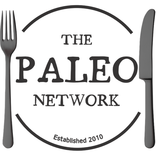Recipe: Sweet Potato and Chocolate Chip Muffins
I find myself wanting to eat baked goods like muffins, cookies and cakes very rarely now I’m Paleo. There’s always an abundance of ‘real food’ like meats, veggies, eggs, fruit and nuts sitting in my fridge, and nine times out of ten I will always go for something from this list rather than starting a batch of Paleo brownies or cupcakes. There are times, however, when the aspiring chef within you wants to make a sweet treat for the whole family; but its often a battle finding a recipe that is full of goodness.
These sweet potato muffins are one of the exceptions to the rule. They pack in a ton of goodness from the nutrient dense eggs, coconut flour, flaxseed and the sweet potatoes themselves. The sweet potato and cinnamon combination is divine, and the chocolate chips add an extra bit of indulgence. Give them a try – you won’t be disappointed!
Makes 8
Sweet Potato and Chocolate Chip Muffins Ingredients:
- 1.5 cups roasted sweet potato, mashed and left to cool
- 2 tbsp coconut oil
- 3 eggs
- 1 cup unsweetened almond milk
- 1/3rd cup raw, organic honey
- 2 heaped tbsp. ground flaxseed
- ½ cup coconut flour
- 100g dark chocolate chips (at least 70%) or a 100g bar of dark chocolate, chopped into small pieces
- 1 tbsp gluten free baking powder
- ½ tsp salt
- 2 tsp cinnamon
Sweet Potato and Chocolate Chip Muffins How To:
1) Preheat the oven to 180C / 350F. Line an 8 hole muffin tray with paper or silicon cases.
2) In a bowl, combine the sweet potato mash with the coconut oil, eggs, almond milk and honey. Whisk together until smooth.
3) In a separate bowl, combine the flaxseed, coconut flour, baking powder, salt and cinnamon, before folding into the wet ingredients to make a batter. Stir in the chocolate chips.
4) Pour the muffin batter into the cases, filling to about 2/3rds of the way up. Bake on the top shelf of your oven for approximately 30 minutes, or until golden brown and a toothpick comes out clean.






















